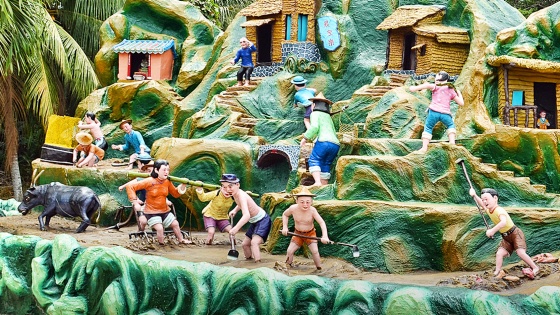Haw Par Villa
Haw Par Villa
Blog Article

Overview
Haw Par Villa, generally known as Tiger Balm Gardens, is definitely an legendary theme park situated in Singapore. This exceptional attraction presents site visitors a glimpse into Chinese mythology and folklore via its breathtaking and intricate statues, dioramas, and displays. Let's choose a better look at the important things of the interesting location.
History:
Haw Par Villa was in the beginning developed by Aw Boon Haw, the magnate behind the renowned Tiger Balm ointment. The park opened its doorways in 1937 as a way to equally entertain and teach people today about standard Chinese values, heritage, and beliefs. Through the entire decades, it's gone through various renovations but has managed to keep its primary allure.
Mythological Figures:
One of the primary highlights of Haw Par Villa is its large assortment of statues depicting characters from Chinese mythology and legends. Website visitors will encounter figures like Journey to your West's Sunlight Wukong (the Monkey King), 8 Immortals from Daoism, and also crucial deities which include Guanyin (Goddess of Mercy) and Buddha Shakyamuni.
Topic Parks within just Haw Par Villa:
Within just Haw Par Villa by itself are a variety of unique places or sections:
Ten Courts of Hell: Perhaps Probably the most intriguing parts of Haw Par Villa is Checking out "The Ten Courts of Hell." Listed here website visitors can witness graphic scenes depicting punishments for many sins depending on classic Chinese beliefs about afterlife retributions.
Taoist-Mythology Sculptures: This space showcases spectacular sculptures depicting stories from ancient Taoist myths. These lively artworks carry to daily life tales that were handed down through generations in vivid element.
Backyard garden Sceneries: Beyond mythological sculptures lie serene gardens crammed with picturesque landscapes adorned with lovely flowers and vegetation—an excellent House for visitors to relax amidst character's natural beauty or delight in a casual stroll.
Teochew Opera Centre: The Teochew Opera Centre is a conventional theater setting that consistently hosts performances of your Teochew opera, a significant method of Chinese musical drama with unique regional qualities in its costumes, new music, and storytelling.
Cultural Significance:
Haw Par Villa holds enormous cultural importance as it offers an opportunity to check out various elements of Chinese lifestyle, folklore, and spiritual beliefs. It serves as both an open-air museum plus a place for communal routines like festivals or academic systems enabling readers to gain insights into ancient Chinese traditions.
Additionally, the park's initial intention was to coach readers about ethical values as a result of vivid depictions of heaven and hell – rewarding advantage and condemning vices. Thus Haw Par Villa acts as not only an amusement park but additionally a moral guide teaching essential moral principles from standard Chinese philosophy.
Up to date Relevance:
Even with remaining created decades ago, Haw Par Villa proceeds to catch the attention of locals and vacationers alike as a result of its uniqueness and timeless enchantment. The park has managed to Mix tradition with present-day features by organizing occasions such as artwork exhibitions, lantern festivals for the duration of mid-autumn celebrations showcasing the fusion among modern day aesthetics and common themes connected to the villa.
In recent times, there happen to be endeavours by authorities to refurbish areas of the attraction while guaranteeing its historical authenticity. This ongoing servicing ensures that Haw Par Villa stays obtainable for generations to come back though preserving its prosperous heritage benefit.
Conclusion:
Haw Par Villa stands out between Singapore's attractions for its immersive practical experience into mythical realms by way of intricately-developed sculptures depicting deities, legends, morality tales and punishments in Taoist mythology-encouraged gardenscapes - all inside get more info a reflective natural environment emphasizing lifestyle lessons dependant on compassion shown in direction of others since it conveys historical wisdom guided by moral concepts conducive for self-improvement Situated amidst attractive scenic landscapes rendering it appropriate equally for cultural exploration fans thinking about China's huge mythology/heritage/backgrounds/legends at the same time(proporotinately with thanks rverence to central topic of symbolizing traditional Chinese culture and beliefs).